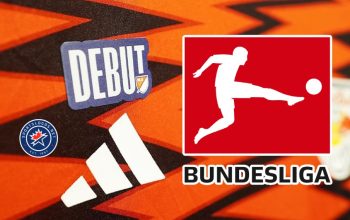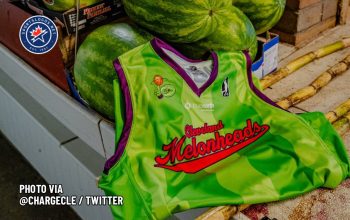We don’t really know how much faster Kobe Bryant or soccer star Theo Walcott can go by wearing a shoe an ounce lighter than the competition, but that hasn’t stopped the major apparel outfitters from continuing the search for the perfect way to design an ultra-light performance shoe.
The new Kobe 8 from Nike now goes head-to-head with the Crazy Light 2 from Adidas for lightweight supremacy on the hardwood. But light for light’s sake doesn’t do anyone much good. The performance aspect must remain for elite-level athletes, whether on the basketball floor, the soccer pitch or track.
In the Kobe 8—Bryant showed off the “away” look in New York City last night for the first time on a NBA floor—Nike brought the shoe’s weight down to 9.6 ounces (size 9), right on par with the Crazy Light. Adidas debuted its shoe this year by going 10 percent lighter than the competition (at the time) by featuring an asymmetrical frame design to increase strength and motion control while reducing girth.
“We not only made it lighter, but we made it strong and more aerodynamic,” says the shoe’s designer, Robbie Fuller, Adidas advanced footwear concept designer. “We work closely with the Adidas Innovation Team to continuously innovate and find that perfect weight-to-strength ratio that gives athletes better command and agility on court.”
Nike is on a similar path. Performance footwear creative director Eric Avar says the Kobe 8 uses a new “Nike Engineered Mesh” for the first time in a basketball shoe to help slim down the shoe adorned with a snakeskin-like design. This new textile is 90 percent mesh for breathability and lightness, but tightly woven for strength.
“Nike Engineered Mesh creates a dynamic fit that syncs around Kobe’s foot to mimic the natural biomechanics, delivering security where he needs it,” Avar says. “We’re always pushing the limits of Kobe’s shoe to be faster, more precise and to be modern.”
Kobe, during a Los Angeles launch of the shoe, says that shaving fractions off the height and weight allows him to “play faster with more control so I can maneuver across the court.”
But this isn’t Nike’s first foray into the world of light shoes, a trend started by Adidas that now has Nike in the mix too. This summer, in Venice, Italy, Nike unveiled the Green Speed soccer boot. The Green Speed claims the title of most sustainable soccer boot, while being one of the lightest ever. Aiming to reduce weight—now 5.64 ounces and right on par with the adizero f50 from Adidas and the Puma v1.11 SL as wildly light—Nike found using sustainable components created a barefoot-light shoe. Recycled bottles break down as fabric, natural castor beans provide oil for the plastics and feathery single-layer insole (which reduces glue needs), kenaf-plant fiber forms the toe board and relocating reduced-sized plastics to the outside eliminates excess padding layers.
The original release timed for the Olympics was followed up this month with the GS2 release.
Andy Caine, vice president of footwear design for Nike soccer, spoke in Venice about the new boot and the drive to start fresh. “The less you build, the more you focus,” he told me. “We allowed movement and stretch and also took out material as much as possible. It provides fit and reduces the amount of material we put into the boot.”
Using all-natural materials actually resulted in lighter options, a reduction of parts, the same level of performance and all for an “ultra-light weight.”
“We are maximizing each and every part,” Caine says. “The focus is first and foremost on performance. The first filter is always performance. If you don’t get everything correct for the athletes, there is no reason (to design).
“Can we get as barefoot as we can to give you a perfect, natural touch on the ball?” Caine asks. “We wanted to build a simpler, thinner package that also reduces the amount of part and the amount of construction. The impact is reduction.”
Not only is the bio-based traction plate made primarily from castor beans for a sustainable bent on the shoes, but it also allowed the shoe to explore a new product in a “minimalist diamond-silhouette spine” to offer a lighter weight with flex and agility. Couple that reworked design with the sheer removal of some aspects of the shoe and Caine says they were able to completely redesign their soccer shoe.
As the big-name companies strive to set new low marks for lightweight performance, expect the looks of the shoes to follow suit, with constantly tweaking shapes and first-ever materials. Maybe those ounces really do add up.
















